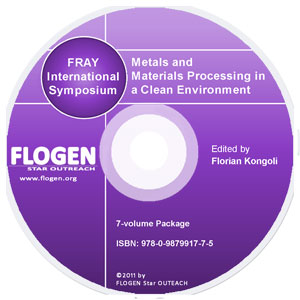
CD shopping page |
2011-Sustainable Industrial Processing Summit
|
| Editors: | Florian K |
| Publisher: | Flogen Star OUTREACH |
| Publication Year: | 2012 |
| Pages: | 764 pages |
| ISBN: | 978-0-9879917-5-1 |
| ISSN: | 2291-1227 (Metals and Materials Processing in a Clean Environment Series) |
Microbial processes in mineral, beneficiation, extractive metallurgy and environmental remediation
S Subramanian1; S Sampath2; Ramachandran Kumar3; Carsten Schwandt3;1INDIAN INSTITUTE OF SCIENCE, Bangalore, India; 2DEPARTMENT OF INORGANIC AND PHYSICAL CHEMISTRY, IN, Bangalore, India; 3UNIVERSITY OF CAMBRIDGE, Cambridge, United Kingdom;
Type of Paper: Invite
Id Paper: 564
Topic: 14
Abstract:
In recent years, the application of microbiological methods to minerals processing, metal extraction and environmental remediation has gained an impetus with commercial bioleaching or biooxidation plants being operated for the extraction of copper, cobalt, gold and uranium. The subject of bio-flotation and bio-flocculation is relatively new, wherein the adhesion of microbial cells to minerals, modulates their surface chemistry to make them either hydrophobic or hydrophilic. The bio-modification of mineral surfaces is also facilitated by the extra-cellular bacterial secretions. There is tremendous potential to utilize microorganisms in remediation processes. In this paper, the role of acidophilic chemolithotrophs such as Acidithiobacillus thiooxidans and neutrophilic heterotrophs such as Paenibacillus polymyxa in the beneficiation of sulphide minerals is illustrated. The role of bacterial cells as well as metabolic products such as bioproteins and exopolysaccharides in significantly altering the surface chemistry of sulphide minerals is discussed. Case studies with respect to an Indian copper mine and mill tailings are presented. Typical studies on the bioremediation of acid mine drainage and toxic metals such as lead and chromium are highlighted. The mechanisms of microbe-mineral interactions are delineated